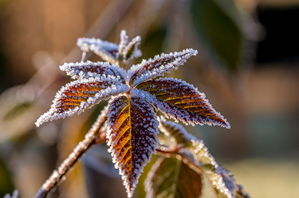News Article
May 25, 2017
Weather Patterns' Influence on Frost Timing

University of Utah and iUTAH researcher Court Strong has been in the news for his contributions to research on weather patterns.
A media release provided by the University of Utah’s science writer Paul Gabrielsen said, “The frost-free season in North America is approximately 10 days longer now than it was a century ago. In a new study, published in Nature Communications, researchers from the University of Utah and the U.S. Geological Survey parse the factors contributing to the timing of frost in the United States. Atmospheric circulation patterns, they found, were the dominant influence on frost timing, although the trend of globally warming temperatures played a part as well.
‘The frost-free season has been lengthening over the past century, and now we understand the changes in atmospheric circulation that are extremely strong in frost timing, even stronger than global warming,’ says University of Utah atmospheric sciences professor Court Strong.
Weather and climate are complex systems, with many factors affecting what the particular weather conditions might be in a certain place at a certain time. Previous research, says Gregory McCabe, of the USGS in Denver has focused on the role of large-scale phenomena like El Niño. ‘I don’t think anyone has broken it down to look at the circulations patterns specific to the timing of frost,’ McCabe says.”
Press: Popular Science | EurekaAlert! | Science Daily | Phys.org | Weather Underground | KUER Radio | KUSU Radio | UNews



« Back to list of all news articles


